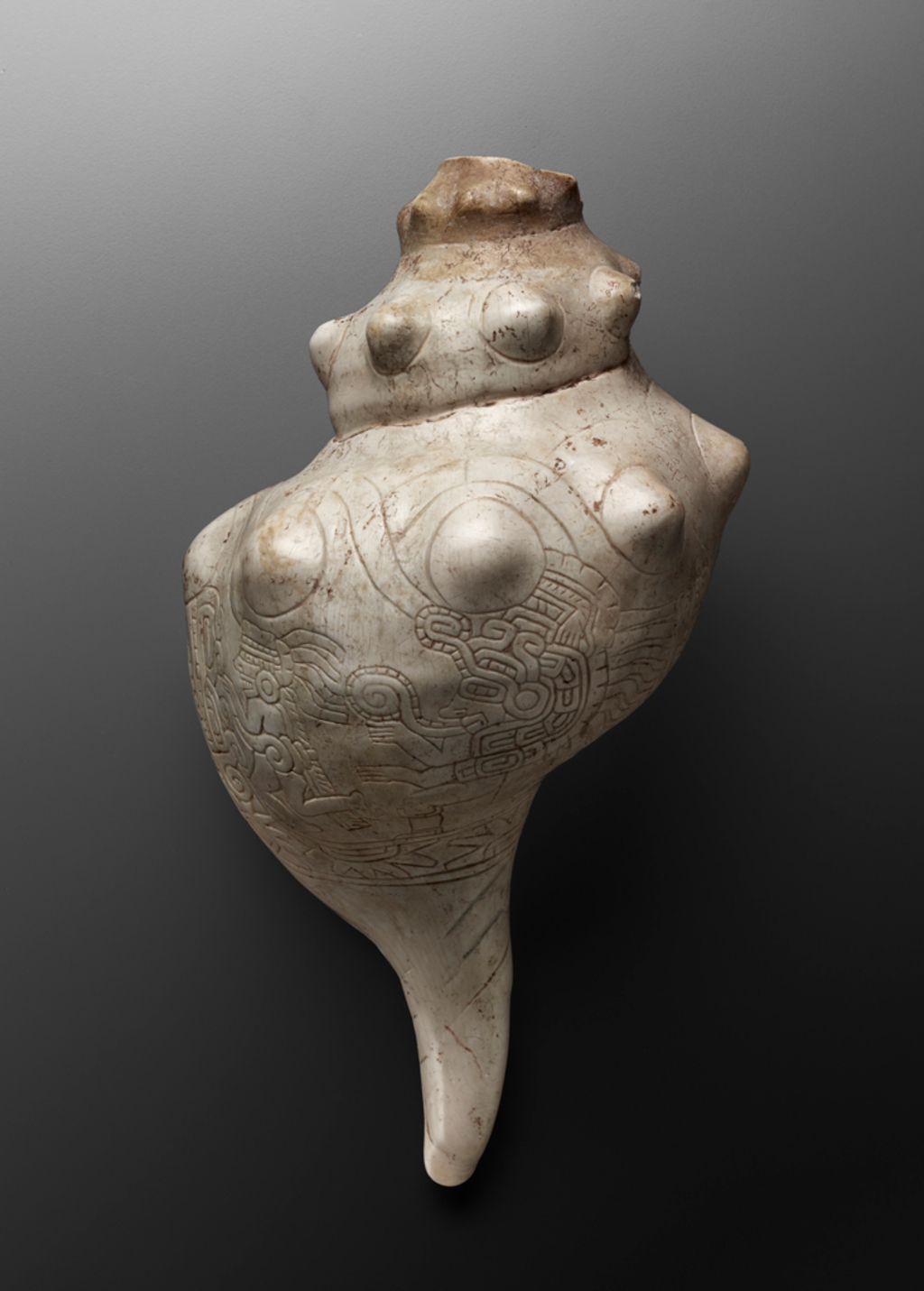The shells of large, predatory marine mollusks embody the profound symbolism of the sea and its life-sustaining nourishment for the Mesoamerican peoples in the Gulf of Mexico and Caribbean. This horn, made from a Horse Conch (Triplofusus giganteus), has been stylistically attributed to the Huastec or Tének people, an archaeological civilization that lived in Mexico’s present-day regions of Veracruz and Hildago during the Postclassic period (10th–16th century).
In Mesoamerica, the spiritual nature of sound and music held magical and transformative properties that were connected to life, death, and the cosmic realm. During ceremonies, the sounds produced by instruments like the conch invited the deities and ancestors to enter the earthly realm. This type of horn could have been played by itself, with the accompaniment of other instruments, or with some form of singing or chanting.
Visual representations of air in motion, such as wind, sounds, or the breath of an individual, were often depicted in the form of a scroll. In the engraved scene on this conch, a speech scroll emerges from one of the two elaborately dressed figures, suggesting that the individual is using their voice, while the other figure holds a shell, much like the object itself. The added presence of the long serpent, reminiscent of the powerful wind and war deity Quetzalcoatl (“Feathered Serpent”), reinforces the spiritual nature of air and the importance of sound in rituals.

